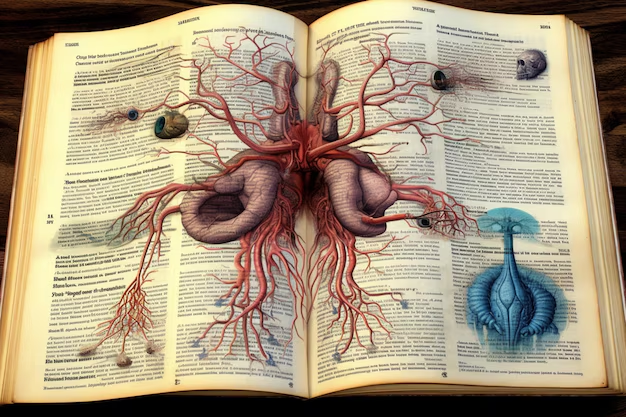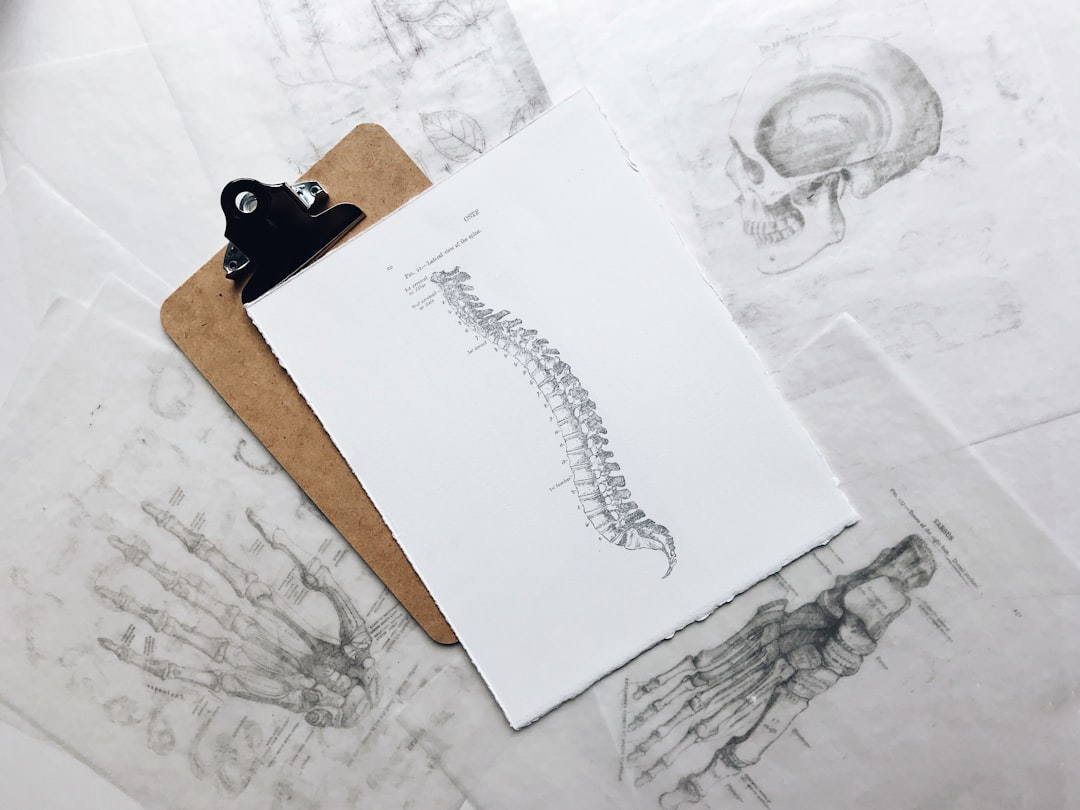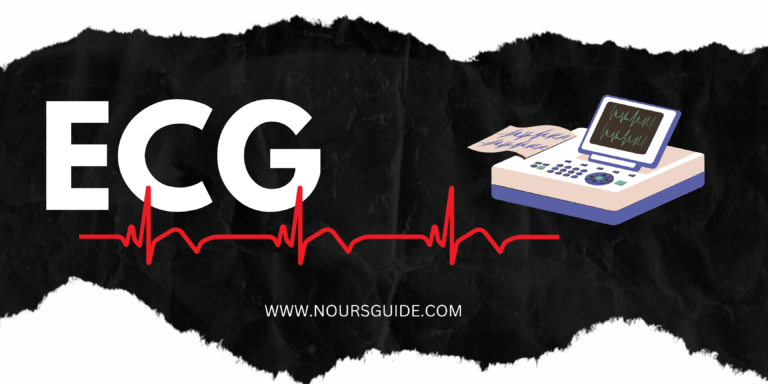2024 Ultimate Anatomy Study Guide For Medical Students12 min read
Table of Contents
knowing what is expected from you.
Being aware of what is expected of you is crucial. It’s essential to comprehend the expectations of your anatomy course or exam. Ensure that you understand the subjects covered in the syllabus, the depth of knowledge required by your instructor for each topic and subtopic, the format of the MCQ schema, the high-yield topics, and the specific details your instructor is emphasizing. The more you focus on understanding the content of the exam, the higher your score will be.
For example, In my first year, there was a general anatomy course, the main goal of the course was to get a glimpse of each system and region no need for extra details studying the extra details consumed a lot of valuable time.

Know your best study method (Technique).
Everyone learns differently, so it’s important to find a study method that works best for you. Whether you prefer visual aids, hands-on activities, or simply reading and taking notes, experiment with different techniques to see what helps you retain information most effectively.
Try a study technique for one chapter then test your results and you will feel what’s the most productive study technique
Deeply understand the exam subjects and the topics they want you to memorize.
Before diving into your anatomy studies, make sure you have a clear understanding of the subjects and topics that will be covered in your exams. Focus your efforts on memorizing the most important information to ensure success.
Know exactly what your instructor focuses on, and know the exam structure. It’s the key to getting high scores on your exam.
What is the Best Order to Study Anatomy? (if there is one).
The best order is to stick with your school order. Some schools teach anatomy by focusing on the musculoskeletal system first, followed by the blood vessels. However, the majority prefer to start with specific body systems or regions, such as general anatomy at the outset, followed by the upper and lower extremities, then the back and abdomen, and finally neuroanatomy, head, and neck.

Discover the top free anatomy resources
There are plenty of free anatomy resources available online, from interactive websites to educational videos. For me, YouTube learning channels were life-saving especially the great Doctor Morton channel The Noted Anatomist. Take advantage of these resources to supplement your studies and gain a deeper understanding & engaging way of learning the human anatomy.
Top Anatomy Books & Atlases:
- NETTER Atlas Of Human Anatomy.
- Sobotta Atlas of Anatomy
- Gray’s Anatomy 3rd_ed
- Grant’s Atlas
- Grants Dissector 16th Edition 2017
- Color Atlas of Anatomy 7th.
- BRS Gross Anatomy 8th edition.
- Becker’s USMLE Step1 Lecture Notes Anatomy 2013
- BRS Neuroanatomy [5th-2014]
- Moore Clinically Oriented Anatomy 7th_ed.
- THIEME Atlas of Anatomy Head and Neuroanatomy
- Snell clinical anatomy by Regions 9th ed 2012_2
- Atlas of Limbs Head and Neck ATP 2016
- High yield Gross Anatomy 2015
Top Free Websites for Learning Anatomy:
In my opinion, the free resources are more than enough but if you want to make the easiest pathway to learn anatomy with study hacks and mnemonics Sketchy Anatomy and Pixorize NeuroAnatomy are two of the best resources out there
The Best YouTube channels to learn anatomy:
Numerous YouTube channels offer anatomy lectures and videos, but I will only include channels that provide a complete course covering all the topics.
- TheNotedAnatomist
- Ninja Nerd
- Dr sam Webster
- doctorbhanuprakash
- Kenhub
- Anatomy Zone
- Taim talks Med
- Rhesus Medicine
- Geeky medics
- Viva voce of anatomy
- Alila Medical
Top Anatomy 3D Tools & Apps.
A wide range of anatomy study tools and apps are accessible to aid in the memorization and comprehension of intricate anatomical concepts. From flashcard apps to virtual dissection tools, I’ve selected the apps that have proven most effective for me. These valuable resources can enhance the engagement and effectiveness of your study sessions.
Anki app and you can check our blog about Anatomy Flashcards here.
Anatomy Learning – 3D Anatomy (Android)
Compete anatomy (IOS)
Regions of Anatomy and Their Relative Difficulty to Study:
Upper Extremity, Lower Extremity: %50
for me, it’s one of the easiest topics in anatomy.
The bones of the upper & lower are simple. For the hand and foot bones, it can be tricky but some mnemonics make the mission easy. And for the artery & veins, it’s simple and can be studied with ease. But for muscles & nerves, it’s a little bit harder to memorize so it needs some extra effort.
Trunk %70, Thorax %65:
Thorax 65% is easier than the Trunk 70%, It’s all about the muscles understanding them is the hardest part and the rest is like the upper & lower extremities.
Abdomen and Pelvis: %60
Here there is a new concept of Perituneum once you understand it everything else becomes easy and clear.
For the pelvis understanding the layers is also the main key point.
Head and Neck %70
Here it’s an advanced level of detail. The bony structures aren’t simple especially the sphenoid bone and the temporal bone. The veins and arteries are not simple also especially the external carotid branches and circle of Willis iT’S all need attention and focus. The thing that will take time is the Cranial nerves their pathways and branches. So you have to be in full power to nail it.
Neuroanatomy %80
It’s the real challenge in anatomy for most medical students. and it needs the most effort.
Complex structures, new terminology, and tons of details. So my advice is to use all the weapons available (Pixorize, Sketchy, mnemonics)
Anatomy Quizzes:
Studying anatomy can be a challenging task for medical students. With the vast amount of information to learn and retain, it is crucial to find effective study techniques that promote active learning and enhance the understanding of complex anatomical structures. One such technique is implementing active recall while studying anatomy.
Implementing Active Recall To Maximize the Utility
Active recall involves actively retrieving information from memory, rather than passively reviewing notes or textbooks. This method has been proven to enhance long-term retention and improve overall understanding of the subject matter. When it comes to anatomy, one effective way to implement active recall is through online anatomy labeling quizzes.
Online anatomy labeling quizzes provide medical students with the opportunity to actively engage with the material by identifying and labeling anatomical structures. These quizzes not only test your knowledge but also reinforce the information in a practical and interactive manner. By actively recalling the names and locations of various anatomical structures, you are strengthening your memory and deepening your understanding of the subject.
How to Ideally Use the Quizzes to Enhance the Learning Process
To make the most out of online anatomy labeling quizzes, it is important to follow a strategic approach. Here are some tips on how to ideally use these quizzes to enhance your learning process:
- Start with the basics: Begin by taking quizzes that focus on the fundamental anatomical structures. This will help you build a strong foundation and familiarize yourself with the terminology.
- Progress to more advanced quizzes: Once you have a good grasp of the basics, challenge yourself with quizzes that cover more complex anatomical structures and systems. This will further expand your knowledge and improve your ability to identify structures accurately.
- Review and analyze: After completing a quiz, take the time to review your answers and understand any mistakes you made. This will help you identify areas of weakness and focus your future study efforts accordingly.
- Practice regularly: Consistency is key when it comes to learning anatomy. Set aside dedicated time each day or week to practice anatomy labeling quizzes. Regular practice will reinforce your knowledge and ensure long-term retention.
- Seek additional resources: While online anatomy labeling quizzes are a valuable tool, it is important to supplement your learning with other resources such as textbooks, atlases, and interactive anatomy software. This will provide you with a comprehensive understanding of the subject.
Best Resources to Practice Anatomy
When it comes to practicing anatomy, there are several reputable resources available online. Here are some of the best resources that offer anatomy labeling quizzes for medical students:
- Practice Anatomy: Practice Anatomy is a website that offers a wide range of interactive quizzes for various anatomical regions and systems. Their quizzes are designed to test your knowledge and provide instant feedback. Visit their website here.
- PurposeGames: PurposeGames is a platform that offers a collection of anatomy quizzes created by users from around the world. You can choose from a variety of quizzes and even create your own. Explore their anatomy quizzes here.
- Kenhub: Kenhub is a comprehensive learning platform that offers interactive anatomy courses, quizzes, and study guides. They provide free anatomy quiz guides to help you learn anatomy faster. Access their anatomy resources here.
Free Anatomy Games for Medical Students

In addition to online anatomy labeling quizzes, there are also free anatomy games available for medical students. These games offer a fun and interactive way to test your knowledge and reinforce your understanding of anatomy.
Some popular anatomy games include:
- Anatomy Arcade: Anatomy Arcade offers a collection of educational games that cover various anatomical topics. Their games are designed to make learning anatomy enjoyable and engaging. Explore Anatomy Arcade here.
- Innerbody: Innerbody is an online platform that provides interactive anatomy games and quizzes. Their games focus on different body systems and offer a visually appealing learning experience. Visit Innerbody’s website here.
- GetBodySmart: GetBodySmart offers interactive anatomy games and quizzes that allow you to test your knowledge of specific anatomical structures and functions. Check out GetBodySmart’s games here.
Telegram Channels & Groups to Actively Test Your Knowledge
On Telegram, numerous channels provide a wide range of materials for self-practice, including interactive quizzes and group discussions. For example, the USMLE guidance channel offers resources for individuals preparing for the United States Medical Licensing Examination, while the Essential Anatomy Channel provides information and resources related to human anatomy. These channels can be valuable resources for individuals seeking to enhance their knowledge and skills in various subjects.
Tips and strategies for learning anatomy.
Active Recall Vs Space Repetition in Learning Anatomy.
Active recall involves actively retrieving information from your memory, while spaced repetition involves reviewing material at increasing intervals. Incorporate both techniques into your study routine to maximize retention and comprehension.
How to implement Active recalls?
Practice active recall by quizzing yourself on anatomical terms, structures, and functions without looking at your notes. This technique can help reinforce your memory and improve long-term retention. You can use Anki, Telegram MCQ Channels, and CBSE Recalls.
Ali Abdaal’s Video is more than enough.
How my friend ranked 1st at Medical School – The Active Recall Framework
How to implement space repetitions?
Use spaced repetition software or create your own spaced study schedule to review material at optimal intervals. This method can help prevent forgetting and enhance your ability to recall information when needed. You can see Ali Abdaal’s space repetition video for extensive details
How to Study for Exams – Spaced Repetition | Evidence-based revision tips
Download our Free Anatomy Study Guide in a Printable PDF form:
If you Liked Our content You can easily add it to your bookmarks and print it by clicking CTR+ P
Or you can see it on our telegram channels
Conclusion:
By incorporating online anatomy labeling quizzes and anatomy games into your study routine, you can make the learning process more interactive and engaging. These resources provide an effective way to reinforce your knowledge, improve your understanding, and prepare for anatomy exams.
Common Questions!
How to Study Anatomy for Art.?
If you’re an artist interested in learning anatomy for drawing or painting purposes, focus on understanding the underlying structures of the human body. Study skeletal and muscular anatomy to improve your figurative artworks and create more realistic representations.
How to Study Anatomy for Exam Days?
On exam days, review your study materials one last time to solidify your knowledge. Take breaks, stay hydrated, and get a good night’s sleep to ensure you’re in peak mental condition for the test.
Download our Free Anatomy Study Guide in a Printable PDF form. Access our free printable anatomy study guide for a convenient and portable way to review anatomical concepts on the go. This resource includes key information, diagrams, and mnemonics to aid in your studies.
In conclusion, mastering human anatomy can be a challenging but rewarding endeavor. By utilizing the right study techniques, resources, and tools, you can enhance your understanding of the human body and succeed in your anatomy studies. Download our free anatomy study guide and start your journey to anatomical knowledge today!






